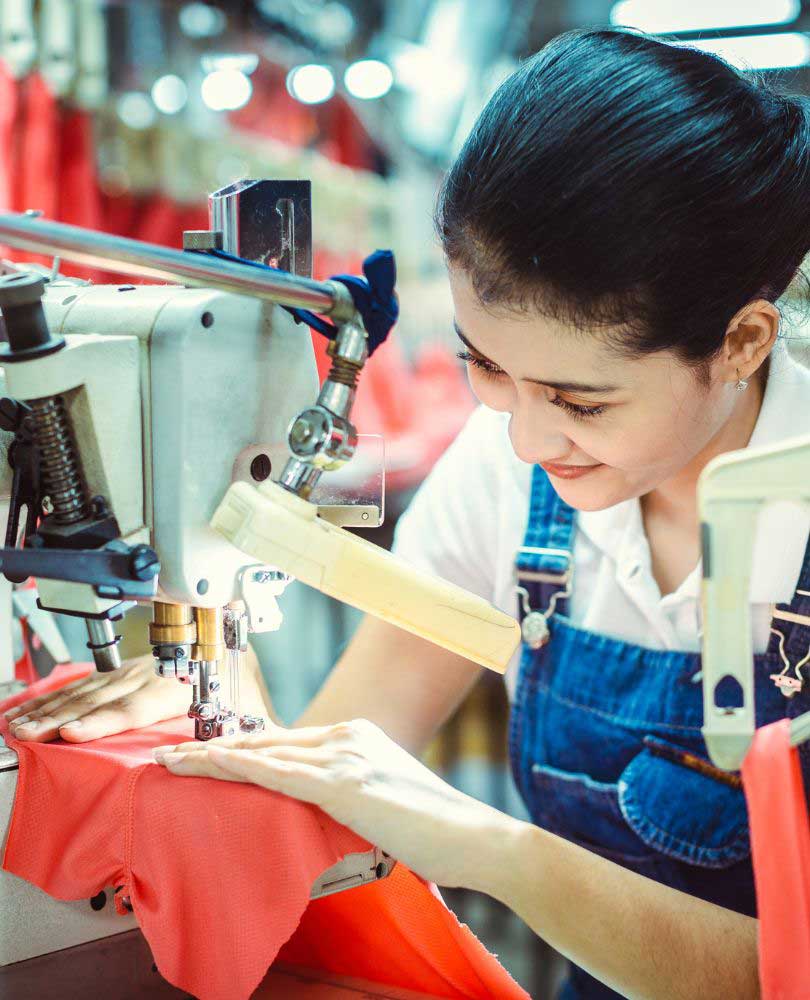Textiles & Apparels
The Global Textile and Apparel Industry
An Overview
Textiles and apparel are an essential part of our daily lives, from the clothes we wear to the sheets we sleep on. The textile industry has a rich history and continues to evolve with advancements in technology and changing consumer preferences.
The market includes a diverse range of products, ranging from everyday wear to luxury brands, and is highly competitive. The apparel retail market is a dynamic and ever-changing industry that has been influenced by various factors such as technology, globalization, and consumer preferences.
The apparel industry has undergone a significant transformation over the years, from being a traditional brick-and-mortar business to a more digital and omnichannel retail landscape. The rise of e-commerce, social media, and fast fashion has disrupted the industry, resulting in changes in consumer behavior and preferences.
Get In Touch


An integral part of our lives.
Textiles and apparel are an integral part of our lives. From the clothes we wear to the bed sheets we sleep on, textiles are everywhere. They are made from various materials such as cotton, wool, silk, and synthetic fibers. In this blog post, we will explore the world of textiles and apparel, from their history to their modern-day applications.
Types of Textiles
Textiles can be broadly classified into two categories: natural and synthetic. Natural textiles are made from plant or animal fibers. Cotton, linen, and wool are some examples of natural fibers. Synthetic textiles, on the other hand, are made from man-made fibers such as polyester, nylon, and rayon.
Uses of Textiles: Textiles have a wide range of applications. From t-shirts to dresses, textiles are used to create garments that are comfortable, durable, and fashionable. Textiles are also used in the production of household items such as curtains, bed sheets, and upholstery. In addition, textiles are used in industrial applications such as car seats, airplane interiors, and medical devices.

The Apparel Industry
The apparel industry is a multi-billion dollar industry that encompasses everything from design and production to marketing and sales.
The apparel retail market is a highly dynamic and rapidly evolving sector. Retailers are constantly facing new challenges, while trying to capitalize on emerging trends and opportunities. The industry has undergone significant changes in recent years due to globalization and advancements in technology. Today, many apparel companies have moved their manufacturing operations to countries with lower labor costs, such as China and Bangladesh. In addition, e-commerce has transformed the way apparel is sold, with many consumers now shopping online instead of in physical stores.
Sustainability in Textiles and Apparel
As consumers become more environmentally conscious, sustainability has become an important issue in the textiles and apparel industry. Many companies are now using sustainable materials such as organic cotton and recycled polyester. In addition, some companies are implementing sustainable production practices such as reducing water usage and using renewable energy sources.
The Current State of the Apparel Retail Market
The global apparel retail market was valued at $1.5 trillion in 2020 and is expected to grow at a CAGR of 4.9% from 2021 to 2028. The growth of the market is primarily driven by rising consumer disposable income, increasing fashion consciousness, and changing lifestyles.
The market is highly fragmented and includes a diverse range of products, from basic clothing to luxury fashion brands. The apparel retail market is also characterized by intense competition, with retailers vying for market share through price, quality, and innovation
India: A Leading Producer and Exporter of Raw Cotton and Cotton Yarn
India is a leading player in the global cotton market, with a rich history of producing and exporting raw cotton and cotton yarn. The country is known for its high-quality cotton, which is in demand around the world. In this article, we will explore India’s position in the global cotton market, its production and export figures, as well as the challenges and opportunities faced by the industry.
India’s Position in the Global Cotton Market
India is a significant player in the global cotton market, with a share of around 20% of the world’s cotton production. The country exports raw cotton, cotton yarn, and cotton fabrics to various countries, including China, Bangladesh, Vietnam, and Turkey. The United States, Brazil, and Australia are some of the other major cotton-producing countries in the world, but India’s cotton is known for its high-quality and is in demand around the world. The country has an advantage in terms of its low labor costs, which make its cotton products competitive in the global market.
Cotton Export Figures
India is one of the largest exporters of raw cotton and cotton yarn in the world. The country exports around 5-6 million bales of cotton annually, with China being the largest buyer of Indian cotton. Other major buyers of Indian cotton include Bangladesh, Vietnam, and Pakistan.
The country also exports cotton yarn to various countries, including China, Bangladesh, and Vietnam. In 2020, India exported around 1.3 million metric tons of cotton yarn, making it one of the largest exporters of cotton yarn in the world.
